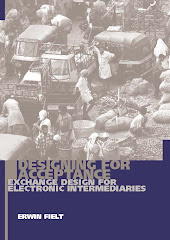The purpose of this paper is to advance our understanding of what contextual factors influence the service bundling process in an organizational setting.
Although previous literature contains insights into the mechanisms underlying bundling and the artefacts for performing the bundling task itself, the body of knowledge seems to lack a comprehensive framework for analysing the actual scenario in which the bundling process is performed. This is required as the scenario will influence the bundling method and the IT support. We address this need by designing a morphological box for analysing bundling scenarios in different organizational settings. The factors featured in the box are systematised into a set of four categories of bundling layers which we identify from reviewing literature. The two core layers in the framework are the service bundling on a type level and on an instance level (i.e. configuration).
To demonstrate the applicability and utility of the proposed morphological box, we apply it to assess the underlying differences and commonalities of two different bundling scenarios from the B2B and G2C sectors which stress the differences between bundling on a type and instance level. In addition, we identify several prospects for future research that can benefit from the proposed morphological box.
See here for more information.
Friday, January 06, 2012
The morphology of service bundling settings
Subscribe to:
Posts (Atom)





